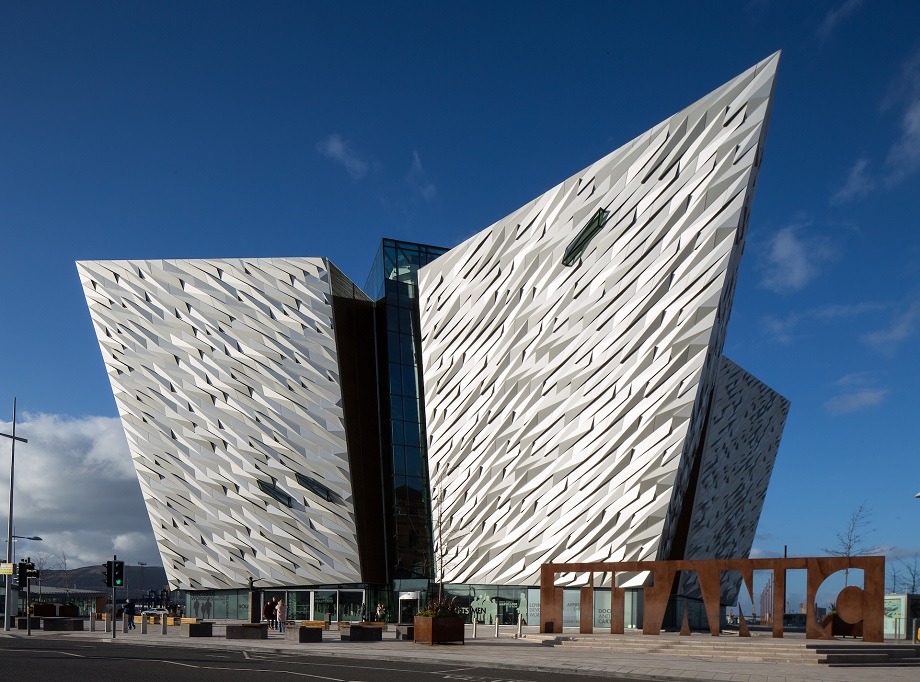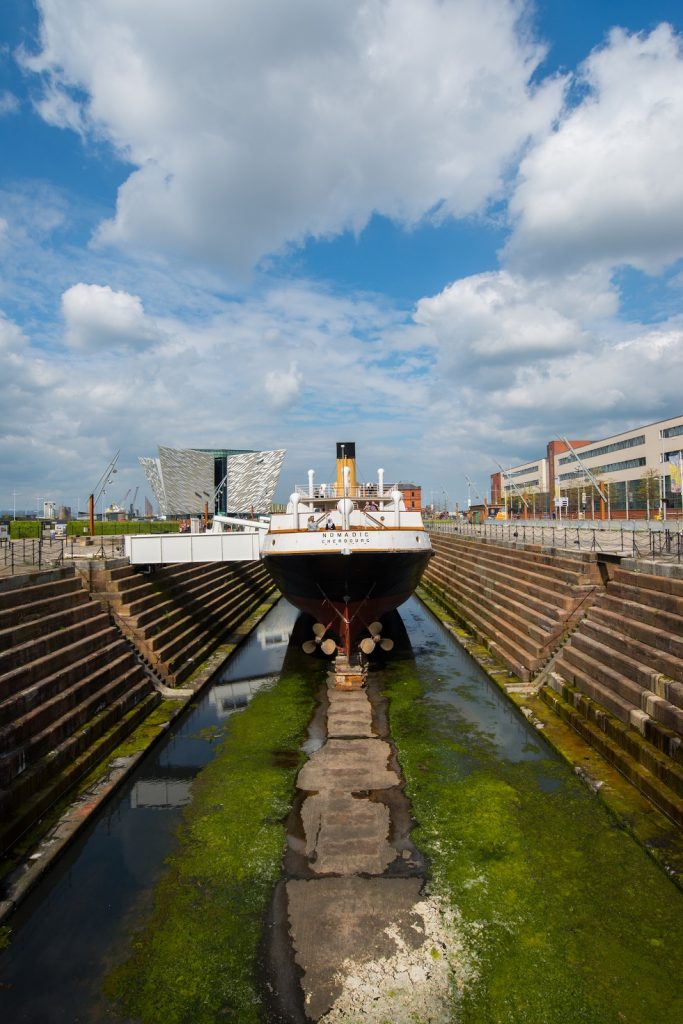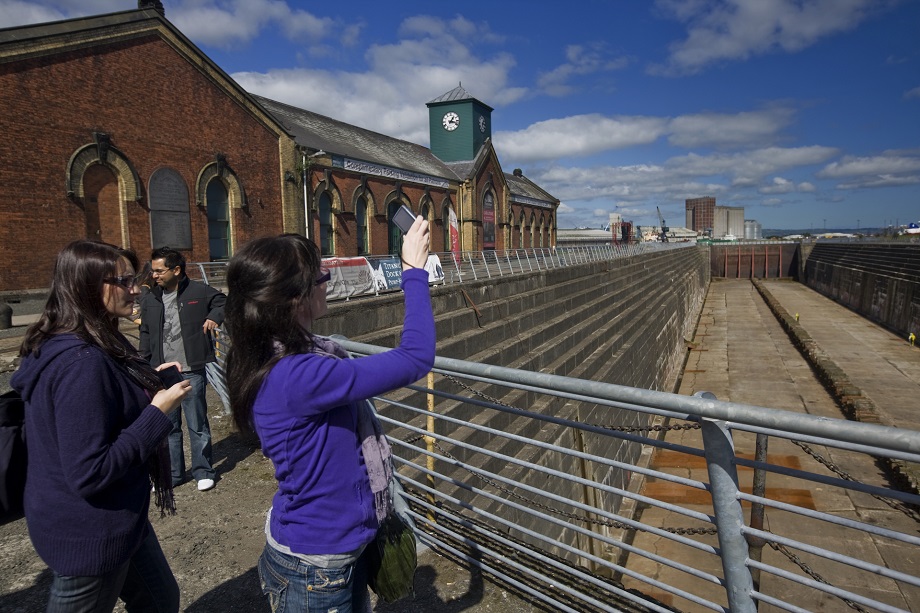A silhouette as characteristic and acquainted as the Lanyon Building at Queens, Belfast City Hal or Samson & Goliath, Titanic Belfast is Northern Ireland tourism’s blockbusting story. With Northern Ireland now receiving vaccinated tourists from across the world, tourists are assembling to this district.
Belfast’s notable and bourgeoning Titanic Quarter is one of the sphere’s prevalent urban-waterfront revival ventures. Mounting from the same spot where the Olympian class liners were pounded into form, Titanic Belfast’s ‘iconic’ wrecks shove skyward. Here one can discover the $135 million Titanic Belfast attraction, Titanic Belfast narrates the story of the famed ocean liner. In 2012, for the centennial of the Titanic tragedy, Belfast unbolted the Titanic quarter and this industrialised spot has been altered into one of the Irelands main tourism draws, home to the Titanic Belfast lure and numerous significant nautical locations.

STUNNING CONSTRUCTION
The iconic building (designed like the bends of a ship) encompasses of 9 galleries over 4 floors. Titanic Belfast transports the sightseer over time: wandering from Edwardian ‘Boomtown Belfast’ to the existing day with existent streaming from where the ruin lies at respite on the ocean floor. The SS Nomadic was built by Harland & Wolff in 1911; it was the tender (a small vessel) that transported passengers from Cherbourg Harbour to RMS Titanic which, owing to its magnitude, was gratified to anchor well seaward. Now entirely rebuilt, SS Nomadic lies in Hamilton Dry Dock straight opposite Titanic Belfast. Fragment of the greater Titanic story, the Hamilton Dock, pump house and the movable gate are of noteworthy antique maritime status. The dock, built in 1867, was the foremost to be recognised on the County Down side of the River Lagan; the caisson is the eldest living vessel fabricated by Harland & Wolff

A WEE BIT OF HISTORY
The slipways where the Titanic was constructed are today a topmost bestowed open-air enactment venue (read UNESCO city of music status), in acknowledgement of its vibrant live music panorama. The yards also poise the big screen in Kenneth Branaghs latest film Belfast, enthused by his youth here through the choppy 1960s. While the dockyards were formerly the highest affluent in the world, they are no longer the city’s core. A profound warmth for Belfast sequences through its people and the shipyards doesn’t just brighten the city’s legacy but now also aid to bind and enthuse its societies.

TITANIC ASPIRATIONS
People teemed into Belfast in pursuit of employment. Its populace augmented between 1851 and 1901 and countless found careers in the shipyards. By the early 1900s, Harland and Wolff were the globes number one shipbuilder. It was during this affluence that Harland and Wolff delivered the R.M.S. Titanic. The greatest ship the realm had realised, it transported over two thousand and two hundred passengers and crew, about fifteen hundreds of whom died when this giant hit an iceberg and sank on its first expedition in 1912. This story is famous owing to several theatrical retellings, comprising one of the highest-grossing films in history, James Camerons 1997 Titanic.
TITANIC HOTEL BELFAST
Unbolted in autumn 2017, Titanic Hotel Belfast is situated in the Harland & Wolff Headquarters building, formerly the nerve centre of the leading shipyard in the planet. Thousands of ships were planned in the Drawing Offices and fabricated on the neighbouring slipways, counting the Titanic of course, the White Star liners Olympic, and Britannic and the naval warship HMS Belfast. The superlative dual Victorian Drawing Offices, with their three-storey tall barrel-vaulted ceilings, are the single living example of this style of architecture in the creation. The building is ‘recorded’ owing to its distinctive architectural and historic significance. Don’t forget to order a portion of fish and chips with mushy peas while here.
(Awarded the “Best food writer in the country” by the Indian culinary forum, WACS and the ministry of Tourism, Rupali Dean writes on food and travel.)

